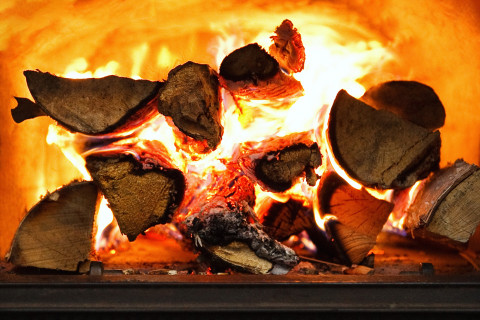Abstract
Atmospheric organic aerosol (OA) consists of a multitude of organic species present in both particulate and gaseous phases. It has a crucial role in the atmospheric chemistry due to its reactivity with atmospheric oxidants. Residential wood combustion (RWC) is one of the major anthropogenic sources of OA, in addition to emitting other pollutants, such as light-absorbing black carbon (BC). The emissions from RWC depend highly on the combustion conditions. In addition, when the exhaust leaves the chimney, it is subjected to the atmospheric chemistry, which may notably transform the amount and composition of the emission. The outcomes of the atmospheric aging processes of RWC emissions have, however, remained unclear. This is particularly true for dark aging, although a major share of RWC is expected to take place during night- or wintertime.
This work examines the organic emissions from two modern, logwood-fired RWC appliances and characterizes their transformation during atmospheric oxidative processes. Atmospheric aging was simulated using two methods: first, a smog chamber for tracing the transformation during the first hours of dark and photochemical aging and second, a novel photochemical emission aging flow tube reactor, with facilitates the study of a wide range of photochemical exposures. The impacts of different user-influenced factors affecting combustion conditions, namely, the ignition method and fuel moisture, on the aging process were also investigated.
The main organic gaseous compound (OGC) groups identified from the primary exhaust were carbonyls and aromatic compounds. The impact of the combustion conditions on the primary OGC composition was notable, which is important also when considering the availability of precursors for secondary organic aerosol (SOA) formation. Organic emissions were elevated by the use of a slower-than-optimal ignition method and from the use of moist fuel. However, use of the typically favoured dry logwood produced elevated amounts of BC and the highest total fine particulate mass of the assessed fuels.
The results of this work show that RWC emissions are significantly transformed by atmospheric processes. Both dark and photochemical aging approximately doubled the mass of particulate OA. In addition to SOA formation, aging oxidized the majority of the primary particulate OA. During dark aging, phenolic and furanoic compounds were assessed to be the main precursors of SOA, and the amount of nitrogen-containing organic matter increased in both the gaseous and particulate phases. In photochemical aging, aromatic hydrocarbons and other aromatic OGC were the main SOA precursors. Initiating photochemical aging after dark aging renewed the transformation of the OA and led to continuation of SOA formation and decay of organonitrates.
As also established in previous studies, RWC exhaust was found to contain relatively high amounts of polycyclic aromatic compounds (PACs). Photochemical aging degraded the majority of the hydrocarbonaceous PACs, while the amount of nitrogen- or oxygen-substituted PACs increased, especially for the first atmospheric equivalent days of exposure. Such transformations in the OA composition are likely to affect both the health- and climate-related emission properties.
The transformation of the OA composition was observed to continue throughout the atmospheric lifetime of OA. The oxidation state of particulate OA increased linearly with the OH exposure, and both the gaseous and particulate phases were enriched with carbonylic fragmentation products. Thus, major reaction pathways of RWC OA are proposed to shift from the initial stage of functionalization and condensation of the OGCs to a more particulate-phase driven chemistry at higher photochemical exposures. These results demonstrate the need for assessing OA composition at a wide range of atmospheric ages, from fresh aerosol to long-term exposures.
The doctoral dissertation of MSc Anni Hartikainen, entitled Transformation of organic aerosol from residential wood combustion during atmospheric aging processes will be examined at the Faculty of Science and Forestry. The opponent in the public examination will be Professor Andrea D’Anna, University of Naples Federico II, Italia, and the custos will be Associate Professor Olli Sippula, University of Eastern Finland. The public examination will be held in English at Kuopio Campus, Snellmania Auditorium SN201 and online on 21 August 2020 starting at 12 noon.



